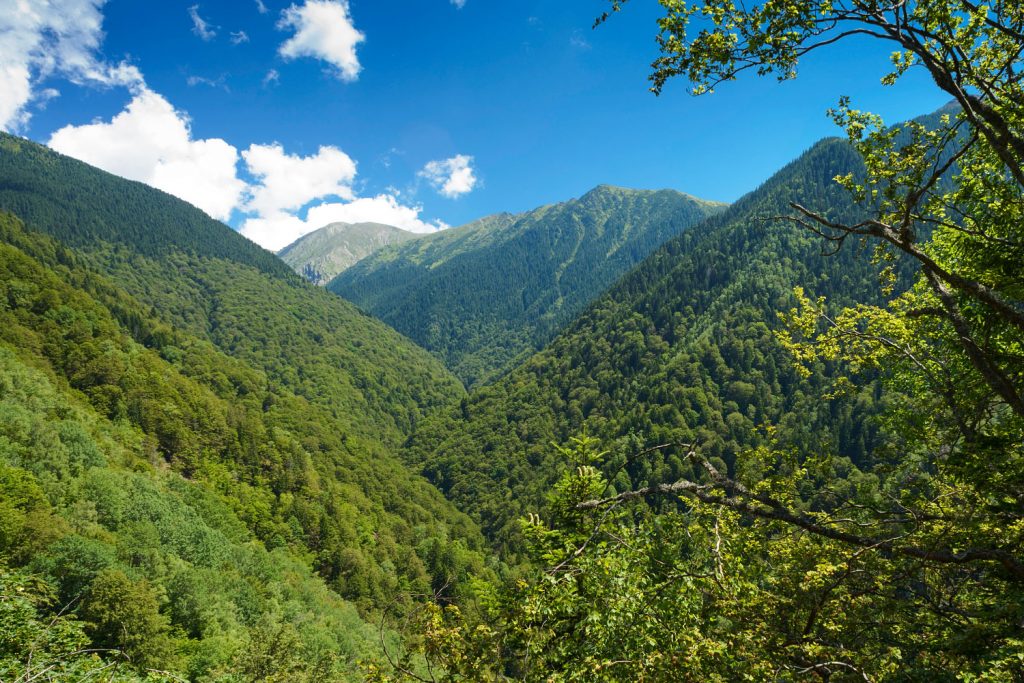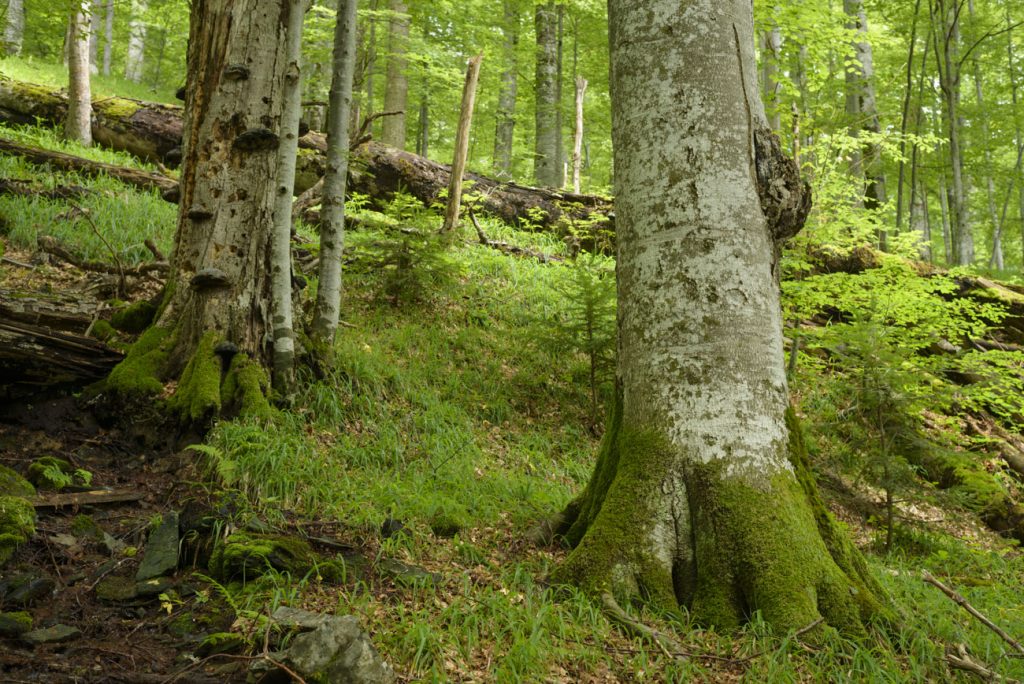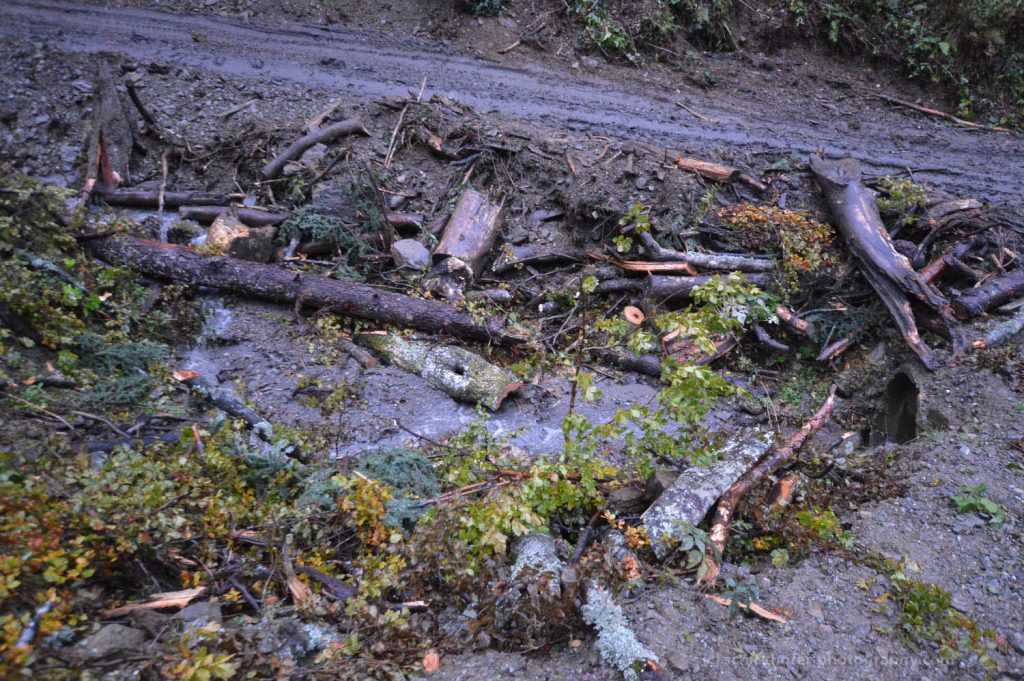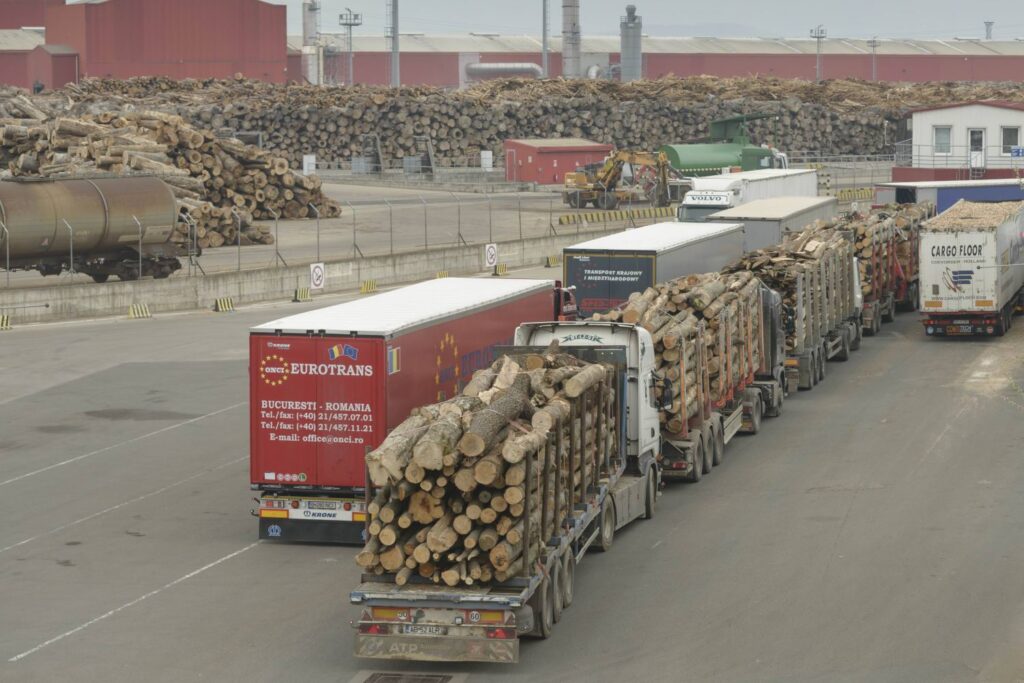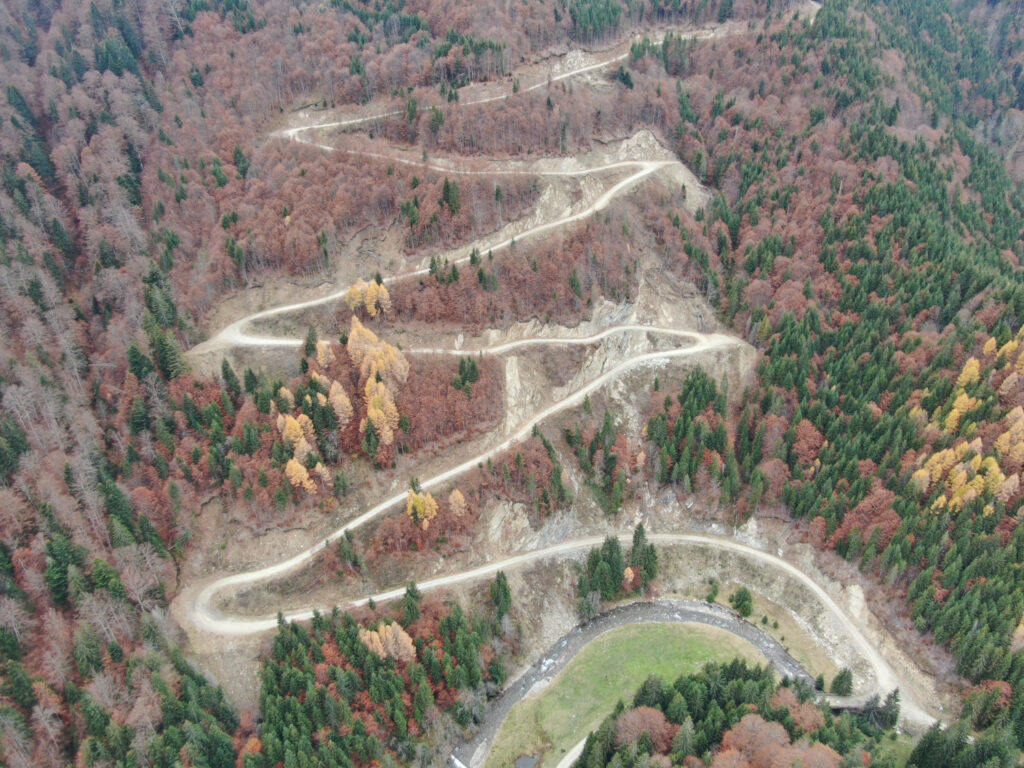The world is facing an interconnected climate and ecosystem crisis. Natural forests play a crucial role for both climate change mitigation and preservation of biodiversity and ecosystem services. Therefore, they must be better protected and the biological diversity of forests restored – also in Europe. EuroNatur Foundation submitted the following feedback to the EU Commission’s Roadmap for a new forest strategy:
Europe’s forests have been affected by climate crisis born drought, storms, wild fires and insect calamities in the past years. These impacts of climate heating now combine with the failures of past forest management, which is primarily based on maximized exploitation of wood resources resulting in large scale clear-cutting, even aged wood plantations (often comprised of one or two fast growing trees species), harvesting with high-impact heavy machinery, drainage of swampy stands and/or the complete removal of critically important old and dead trees.
The latest “State of Nature” report paints a bleak picture of Europe’s forests. Only 15% of forests in the Natura 2000 network are in a favourable status. Less than a third of forests are of uneven aged and 30% are monocultures with only one tree species. Only 5% have five or more tree species. The increase of exploitation, especially for energy production, leads to a further loss of threatened species due to clear-cutting and destruction of habitats, including the loss of dead wood and old trees and reduces the potential for carbon sequestration.
At the same time, the rather small remains of intact natural forests are shrinking, especially in the Carpathians and in Scandinavia.
Forests play a multifunctional role for life on earth and for human society. Therefore, the Forest Strategy needs to go beyond the promotion of the traditional wood extraction-based economy and shift its focus to better consider promoting ecological functions and sustainable flows of goods and services.
In contrast to other regions of the world that are mainly oriented towards aggressive wood extraction and overuse, Europe has a tradition of sustainable forest management when it comes to reforestation and forest planning.
However, sustainable forest management is more than growing at least as many trees as harvested before and needs to ensure durable ecological functioning of forest ecosystems as a key priority. Even-aged monocultures or clearcutting methods cannot not be considered as “sustainable” from an ecological point of view and need to be prohibited in times of emerging climate and nature crisis.
These counterproductive management practices should not be repeated with future efforts regarding afforestation and tree planting, which should be governed by clear and strict ecological criteria. Natural regeneration needs to be considered wherever possible including allowing development of pioneer forests.
We appreciate that the EU Forest Strategy will “foresee measures to avoid or correct unsustainable practices” and seek the “right balance and synergies” between ecological functions and socio-economic interests related to forests.
It is important, that the new Forest Strategy is kept consistent and mutually supports the Biodiversity Strategy and the Green Deal and is not turned into a “Forestry Strategy” driven forward by economic interests.
We support the improvement of “forest protection and restoration to meet the EU biodiversity and climate objectives, and de-crease the loss of forest coverage, while strictly protecting all remaining EU primary and old-growth forests”.
The key formula for the future of Europe’s forests should be: Preserve all biodiversity rich, resilient, close to nature forests – including all remaining old-growth and primary forests – and manage the production forests in a way to enrich biodiversity, maintain and strengthen ecosystem services and improve climate stability.
Strict protection of all remaining primary and old-growth forests in the EU is crucial, also because of their important ecosystem services and their genetic pools for the re-forestation of collapsed wood plantations.
We are convinced that the EU Forest Strategy must go beyond the focus on protection of “old-growth forests” and also consider preserving previously “managed” close-to-nature forests with closed canopy, intact interior micro climate and healthy tree diversity. This is key in particular when it comes to beech and other mixed deciduous forests where a well shaded and cool interior is crucial to keep forests healthy and resilient in the face of climate crisis challenges with increased heat and extended periods of drought.
These kinds of forests could be considered under the title “climate and ecosystem protection forests” and should be either preserved without management or managed in a very cautious and close to nature way (following continuous cover forestry methods or similar to close to nature forest management principles as defined by German “Naturland” certification system), giving priority to the restoring biodiversity, durable functioning of ecological services and their role as important carbon sinks.
Owners, especially private owners of these “climate protection and ecosystem services forests” deserve fair compensation payments.
Furthermore, the habitat and species protection obligations from the Natura 2000 regime need to be respected and better enforced in the forestry sector. In numerous Natura 2000 sites (SCI, SAC, SPA) all over the EU, but in particular in countries such as Romania and Slovakia, valuable and biodiversity rich forest habitats (including old growth and primary forests) are being destroyed or significantly deteriorated by logging – either by clear cutting or by stepwise removal of entire mature stands by shelterwood cuttings. Often, appropriate assessments are not being pursued at all or done with very poor quality and lacking a scientific basement.
Without better enforcement of Natura 2000 legislation in the forest sector and strengthening the conservation aspects of Habitats and Birds directives, the EU Biodiversity Strategy will be severely undermined.
We appreciate development of new products that replace the intensive fossil-based materials and effectively contribute to a TRULY new climate neutral society, but we object any fostering of systems that lead to increased logging of intact forests and more carbon emissions from burning of wood for energy purposes.
The expansion of the wood biomass demand for energy production is a major driver of logging in intact, natural forests in the EU. Forest biomass burning is NOT climate neutral in the short to medium term (the carbon debt can last for centuries), and certainly not at scale by 2050. Emissions from burning wood are seen by the atmosphere just like emissions from fossil fuels. They are real and thus need to be considered as such on the emissions side of the greenhouse gas accounts. The decline in the EU forest sink is a shocking consequence of the increased use of forest biomass as a “renewable” energy source. Forest biomass should not be considered a “renewable” source like solar and wind and should not be eligible for subsidies.
Afforestation and tree planting can contribute to CO2 capture and sequestration, but such efforts must not open doors for a new wave of non-natural tree plantations with low biodiversity value or lead to a revival of monocultures but need to follow strict ecological criteria with clear biodiversity outcomes.
To date, most nature conservation efforts, fostering ecosystem service provision, have come from the public forest estate. Private forest owners have been largely absent in this debate and have mainly reflected their interest in developing timber based economy or even acted in opposition to the promotion of the common good aspects of the forest sector. In the future, private forest owners will have to be more actively engaged in the critical climate and biodiversity functions that forests must play, as they manage a large part of the forest area in Europe.
These solutions should strive to integrate timber production with a wider range of ecosystem services, beyond the classical wood based economy, including public-private partnerships and payment schemes for sustainable supply of ecosystem functions.



